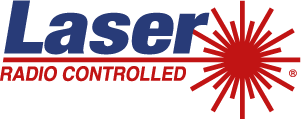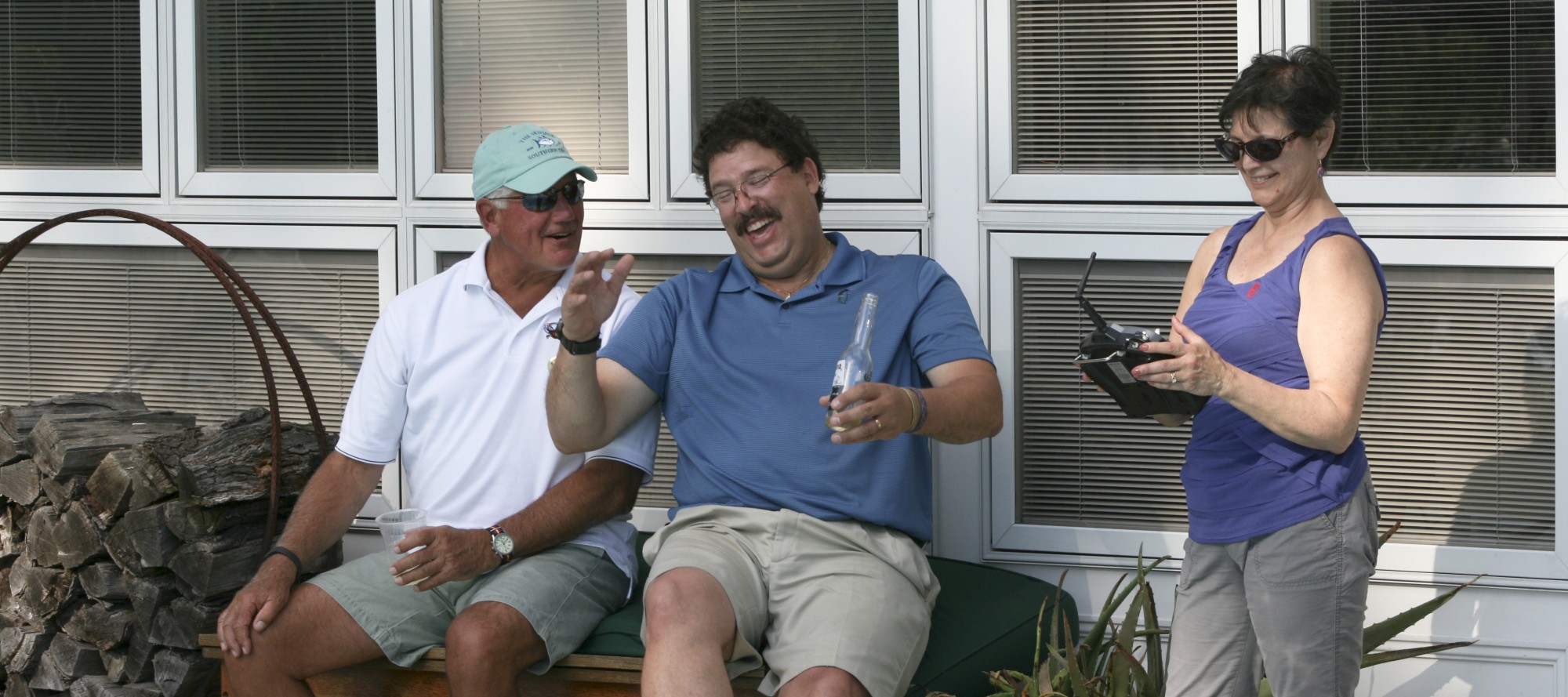An Interview With David Ramos, 2014 National Champion
2014 National Champion Shares His RC Laser Secrets
To find Dave Ramos, who just won the RC Laser Nationals in October, you have to go to his workplace at Chesapeake Performance Models’ shop in Stevensville, Maryland. Dave builds, molds, repairs as well as sails all kinds of RC boats under 8 feet in length (http://www.rcyachts.com/). Dave’s shop consists of two rooms. A bench detail work area shares space with a traditional desk, credenza, phone, and fax/printer, with literally dozens of plaques, trophies, and awards of various sizes and shapes that deck the walls ceiling to floor on three sides. The larger room is where building, molding and fabrication take place. In the office area there are no awards that I could see that are worse than third place. In 2014, Ramos has comfortably won five national RC championships including the Santa Barbara, J Class, CR914, and Star 45, in addition to the RC Laser. He was second to Jamey Betz in a very competitive EC12 Nationals held in Chicago this past month. Dave actually borrowed a boat for the Laser national championship. Before we focused on that win, we started at the beginning.
DB: I’m getting e-mails from Laser folks who want to know who you are and where you came from.
DR: My Uncle Carl started me into regular sailing when I was eight on Lake Winnipesaukee, NH. He also introduced me to scale models as a teen. I quickly became addicted to racing. My first boat was a Hobie 16. I trailered that thing from Corpus Christi, TX, across the Midwest to Chicago, and from Maine to Florida. I also raced big boats on the East and West Coast…even Japan…from Maxis to basically just about anything that would float, almost.
DB: What about One Designs?
DR: Yes! I sailed Stars, Etchells, Melges 24s, J24s, and J22s. The Hobie was the smallest one-design I ever sailed.
DB: I guess all that racing lead to designing. How did that transition come about?
DR: A friend of mine suggested I look into small craft designing, so I went down to Sparkman-Stevens and I spoke to Bill Langen and he said to look into small boat design at The Landings School in Maine. Bill was on the board at the time. He told me to finish my mechanical engineering degree, so I did, and then I went to The Landings School and I graduated first in my class.
My first job was with Hunter Marine, and I worked with them for 3-4 years, then I worked for a sail maker in St. Pete, FL. While there, I got a call from my father’s secretary who said, “Do you know who Bruce Farr is? He’s trying to get a hold of you.” Well I raced to that interview, got the job, called my then girlfriend, Karen (now wife and mother of two), and said we’re moving to Annapolis, Maryland. Karen said, “But we don’t know anyone there.” And I said, “We’ll meet people.”
DB: Was modeling going on in your life at this time.
DR: Oh, yeah. I was modeling since I was 16-17 and I started low key model racing at 18 with the EC12 in Hilton Head, where my parents had a summer place, and in Kansas City, where they lived. I was sailing big boats, but my mom told me to have a look at the pond on the golf course. That’s when I started building and racing the EC12 against guys who were not big boat sailors, and who lacked the experience of tactics. I did very well against them.
DB: After Farr how did you get to your present state of building all sorts of RC boats?
DR: After almost four years at Farr I went into the computer industry and on the side, I was a dealer/builder refinishing the CR914 in my basement and that started to take a lot of my time. Greg Worth, the 914 distributor, was burning out, and sending me all sorts of work. I had a three month backlog of CR914 work worth more to me than my current computer job, so I quit. Greg sold me the CR914 distributorship in 1999. But I was still sailing the EC12, and the competition had improved…a lot. Eventually I started refurbishing EC12s, and then I got the class tooling and started building them. My business has since added the building of the Santa Barbara, the Star 45 and the J Class Shamrock as well as refurbishment of all the above, and then some.
DB: So you were racing RC since the age of 12 — what are some of the lessons you have learned in RC racing?
DR: Crap happens in RC racing. It took me a long time to pull my head out, actually years, to learn to chill out when it happens. You can’t afford to get upset when someone fouls you or you miss the mark. When you get upset, you’re done. I do some clinics on occasion and I tell everyone: “Listen, you will get screwed over in a race. Getting upset works against you.”
DB: How do you approach what happens after a bad start or a foul at a mark, when you find yourself playing catch up?
DR: The boats in front of you are telling you something about the wind, the pressure, sailing angles. Those skippers are reacting to stuff, and you are anticipating it. Paying attention to what’s ahead can help you anticipate as well as react quickly. A crowd at the mark can be avoided, so over stand and sail around them. If you are trying to make up 14 boats, you probably have a 40% chance of that happening. Each leg you should focus on making a 12th into a 9th, and the next leg make a 9th into a 6th. Regattas aren’t necessarily won with firsts. Work to improve in increments if you are behind, and it will make you a more successful skipper.
DB: Moving specifically to the RC Laser, your CR914 business is somewhat in competition with folks who are attracted to the RC Laser. Why did you sail in the RC Laser Nationals?
DR: The best thing about this sport is the people. A dozen of my racing friends, affectionately called the “traveling vagabonds” were sailing in that event and they said come on, here’s a boat, race with us. I certainly did not approach that regatta with expectations of winning. I wanted to race with my friends at a terrific venue, knowing it would be a great time against great competition. The Tred Avon Yacht Club has a great reputation for putting on a first class event for boats large and small, but the main attraction for me was the people. The offset is, I’m in the business, I get to meet new people and that can help. The new AMYA top officers, Ray Seta, from Texas, and Ron Stephanz, from Alabama, were coming and I was looking forward to meeting them.
DB: What did you observe sailing against top RC Laser competition?
DR: Overall, I’m convinced I had better tactics. The majority of the competition seemed to start ok and then bang the left corner and take one or two tacks to get around the windward mark. Mark Rinehart (a new RC Laser skipper, but top skipper in the EC12 class) and I tacked on the headers immediately and were able to gain quick advantages over those who just kept chasing one tack for longer periods of time. Since the RC Laser tacks quickly it was also helpful to wait for smoother water to flip so you did not get into irons in the chop of the Tred Avon River. There is a heavy penalty in the RC Laser for tacking into irons. In addition, hitting the corners doesn’t always work, so looking ahead and learning what others are experiencing helps you make course adjustments sooner.
DB: Do you like the pure one design aspects of the RC Laser?
DR: Absolutely. The RC Laser and the CR914 are both one designs. That means no real battle of the wallets with either boat. Look at the IOM class. Someone wins a regatta with this design or that design and everyone races to duplicate it. That can get expensive. I prefer the idea of me against you.
DB: Any nuances of the RC Laser you picked up as you learned the boat?
DR: In Oxford we had good wind both days. The nature of the boat is that when heeled, it tends to drive the bow down lifting the rudder, thus costing you some rudder control. Downwind, I learned (from a fellow skipper standing next to me), to wiggle the stick to lift the bow and avoid plowing under. Another tactic I learned to use is to play the sail in and out slightly to keep the boat driving and lifting. I noticed that I sail a little higher than most. I’m a pincher but in the RC Laser if you are bringing that boom in a little from the sheer toward the center line you better focus on not getting into irons. I found that constantly working the sails and rudder while avoiding that unforgiving point of irons requires constant focus.
DB: Would you like to sail an RC Laser in the future?
DR: You bet. Being with my friends is really most important. We sail quite a few RC boats together. Adding the Laser to the mix is just part of the fun. I’ll come back to defend. I don’t like guys who win and don’t defend. It’s bad form. I owe it to the class to come back and, certainly try my best to win again. Plus my friends will be there.

